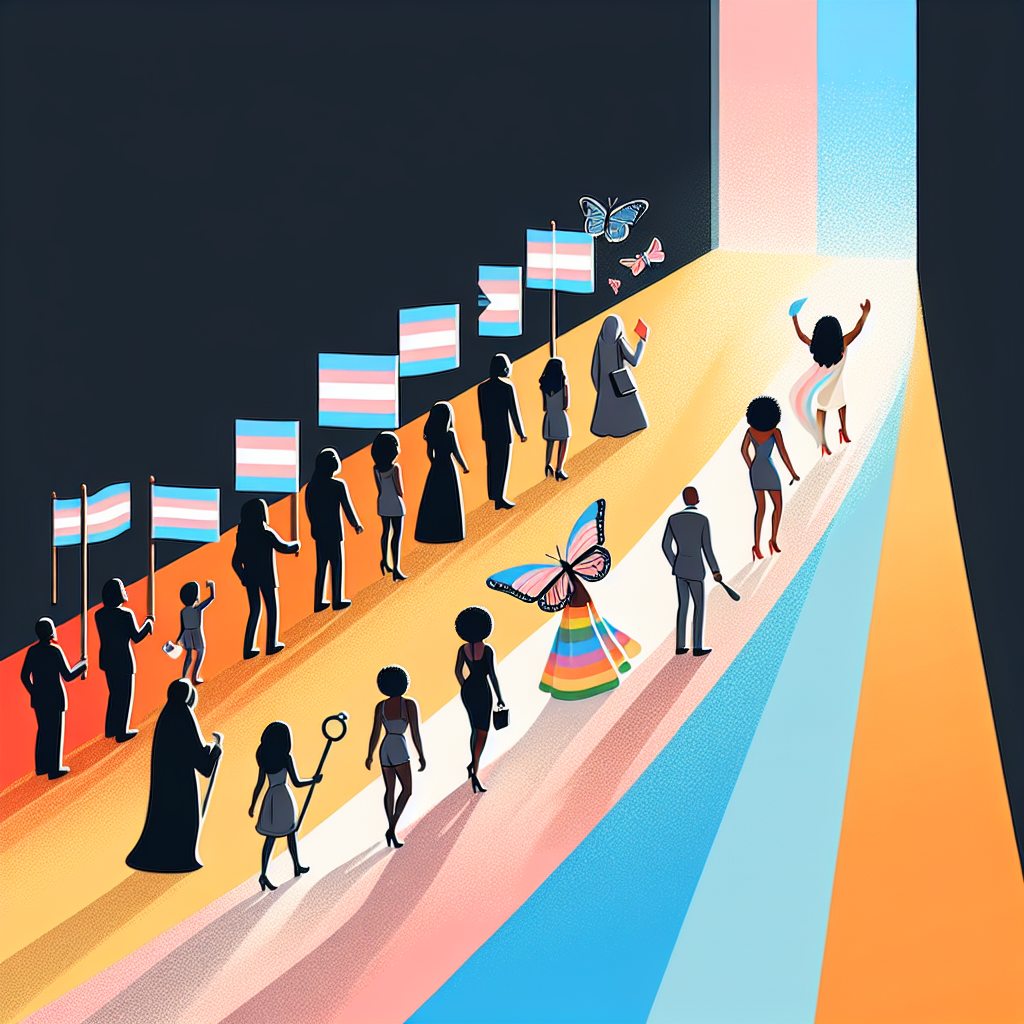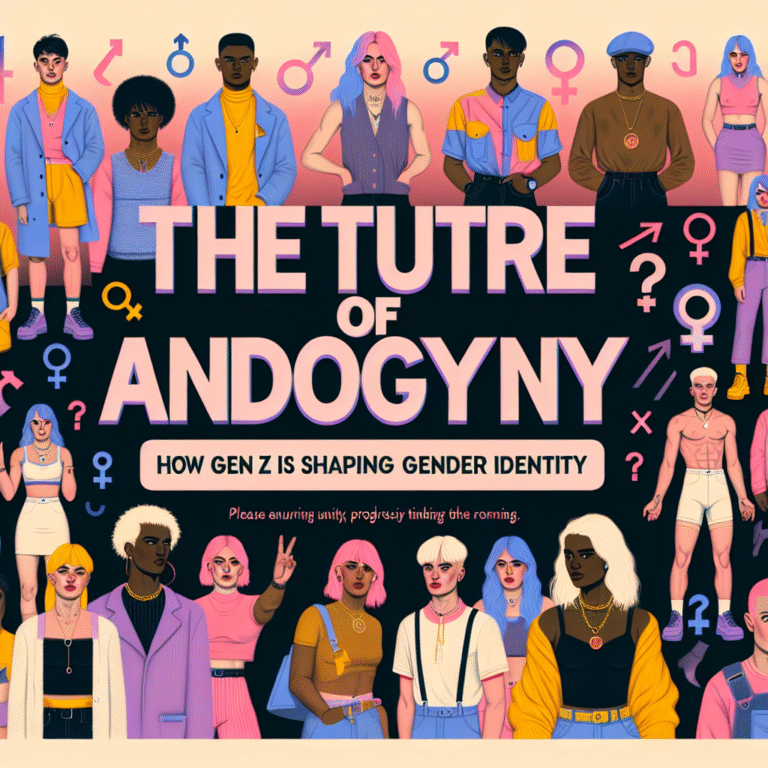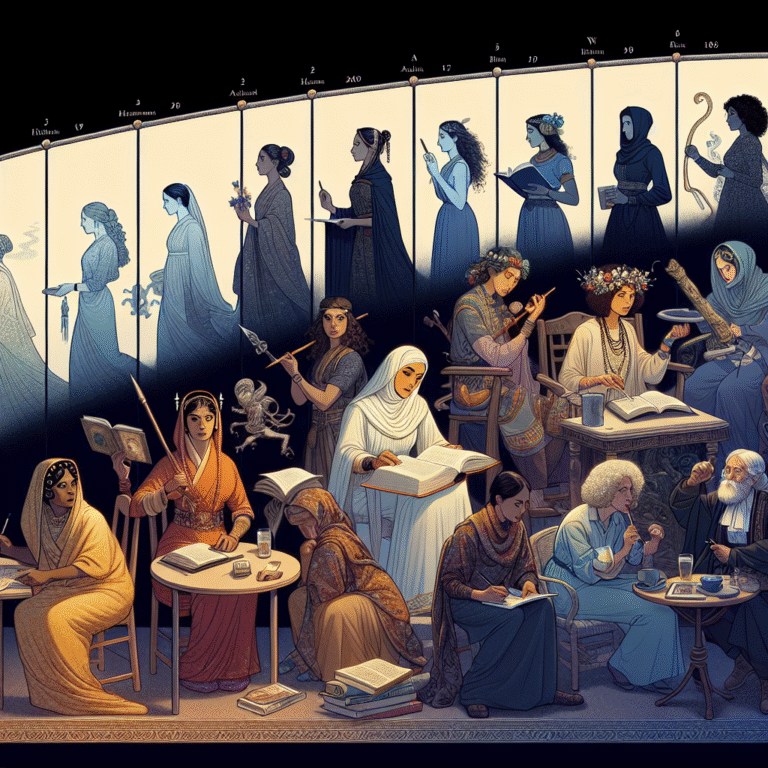
Introduction
In a world increasingly aware of the importance of diversity, the stories of transgender individuals have emerged from the shadows of marginalization into the bright light of visibility. The journey from marginalization to visibility not only celebrates personal achievements but also reflects broader societal change and acceptance. Transgender voices, once silenced or ignored, are now echoing through literature, art, politics, and everyday life. This transformation is essential for fostering understanding and inclusivity, making the phrase "From Marginalization to Visibility: Celebrating Transgender Stories and Achievements" resonate powerfully in today’s discourse.
Transgender narratives are more than just stories; they are powerful testaments to resilience, identity, and the unyielding quest for acceptance and rights. Each journey from marginalization to visibility contributes to a collective tapestry that inspires change and encourages solidarity. Throughout this article, we will explore significant achievements, personal narratives, and the vital role of visibility in driving societal transformation.
Understanding Marginalization
Defining Marginalization
Marginalization refers to the social processes that push certain groups to the periphery of society, denying them access to essential resources, rights, and opportunities. For many transgender individuals, this means facing systemic discrimination, social isolation, and economic hardship. According to a 2015 study by the National Center for Transgender Equality (NCTE), nearly 40% of transgender individuals reported being victims of physical assault at some point in their lives, highlighting the harsh realities faced by marginalized communities.
Impact of Marginalization on Transgender Lives
Marginalization has devastating effects on mental health, with higher rates of depression and anxiety reported among transgender individuals. The lack of visibility often leads to a sense of invisibility and worthlessness, further entrenching barriers to acceptance and support. Yet, in the face of such challenges, countless transgender individuals have emerged as powerful voices for change, advocating not only for their rights but for societal recognition and inclusion.
The Shift to Visibility
Historical Context
Historically, transgender individuals have faced severe discrimination and exclusion. The Stonewall Riots of 1969 are often cited as a catalyst for the LGBTQ+ rights movement. Trans activists, including Marsha P. Johnson and Sylvia Rivera, played pivotal roles in this fight. Their bravery and determination symbolize the beginning of a long journey toward visibility and acceptance.
Case Study: The Stonewall Riots
The Stonewall Riots were not only a response to systemic oppression but also a pivotal moment that ignited the LGBTQ+ rights movement. The involvement of transgender individuals highlighted the urgent need for representation and advocacy. This shift marked the beginning of a new era of activism, reflecting a movement moving from the shadows into the public spotlight.
Recent Milestones in Visibility
In recent years, significant milestones have marked the journey from marginalization to visibility for transgender individuals. Legislative changes, increased representation in media, and the emergence of transgender role models have all contributed to this movement.
Case Study: Representation in Media
In 2014, the critically acclaimed series "Orange is the New Black" introduced audiences to the character Sophia Burset, played by Laverne Cox, a transgender woman. This representation was groundbreaking, as it presented a multifaceted portrayal of a transgender individual instead of a mere caricature. Laverne Cox has since become a prominent advocate for transgender rights, using her platform to discuss the challenges and triumphs of being transgender.
Celebrating Achievements
Notable Personalities in the Transgender Community
The journey from marginalization to visibility encompasses numerous stories of triumph and perseverance. Notable figures like Janet Mock, Billy Porter, and Dr. Rachel Levine have shattered barriers and set new standards across various sectors.
- Janet Mock: A writer, director, and transgender rights advocate, Mock’s memoir, Redefining Realness, challenges stereotypes and encourages authenticity.
- Billy Porter: An award-winning actor and performer, Porter uses his platform to address issues surrounding gender identity and personal expression.
- Dr. Rachel Levine: As the first openly transgender federal official, Levine’s appointment as Assistant Secretary for Health signifies a monumental step toward inclusivity in healthcare.
The Role of Activism
Activism has played a crucial role in the journey from marginalization to visibility. Organizations like the Human Rights Campaign (HRC) and GLAAD work tirelessly to advocate for the rights of transgender individuals, providing essential resources and support. Recent campaigns have focused on trans youth, promoting awareness and acceptance in schools, and advocating for policy changes that protect transgender rights.
Case Study: The Visibility of Trans Youth
The fight for transgender rights has gained significant traction concerning youth. Organizations like the Trevor Project provide suicide prevention services specifically tailored for LGBTQ+ youth, highlighting the urgent need for supportive environments. The stories of young activists, such as Jazz Jennings, have brought attention to the challenges faced by transgender youth, fostering greater understanding and acceptance.
Challenges to Visibility
While progress has been made, challenges remain. The backlash against transgender rights, particularly in political contexts, highlights the ongoing struggle for acceptance and recognition. Issues around access to healthcare, sports participation, and bathroom rights continue to be hotly debated.
Data Table: Common Challenges Faced by Trans Individuals
| Challenge | Percentage of Respondents Experiencing It |
|---|---|
| Discrimination in Employment | 30% |
| Difficulty Accessing Healthcare | 23% |
| Harassment in Public Spaces | 52% |
| Negative Media Representation | 61% |
This data underscores the urgent need for increased visibility and advocacy to combat these issues.
The Importance of Visibility
Building Community and Acceptance
Visibility plays a crucial role in building community and fostering acceptance. By sharing stories and experiences, transgender individuals contribute to greater understanding and empathy. Public figures, authors, and everyday advocates help combat stereotypes and demonstrate the richness of transgender lives.
Initiatives Promoting Visibility
Numerous initiatives and events celebrate transgender stories and achievements, such as Transgender Day of Visibility and Pride Month. These occasions serve as powerful platforms for elevating transgender voices and showcasing their contributions to society.
Case Study: Transgender Day of Visibility
Transgender Day of Visibility, observed annually on March 31, aims to celebrate transgender people and their contributions to society while raising awareness about discrimination and violence faced by the community. This day serves as a reminder that visibility matters, empowering individuals to embrace their identities and encouraging allies to advocate for transgender rights.
Conclusion
The journey from marginalization to visibility is one filled with challenges, triumphs, and inspiring stories. As we continue to celebrate transgender achievements and advocate for their rights, it is essential to recognize that visibility is not merely a destination; it is an ongoing process in the quest for equality.
Transgender stories enrich our understanding of humanity, break down barriers, and foster a more inclusive society. By uplifting these narratives, we contribute to a future where everyone can embrace their identity without fear.
Motivational Takeaway
As we reflect on the journey from marginalization to visibility, let’s commit ourselves to being allies and advocates for transgender rights. Every story matters, and every action contributes to a more inclusive world. Embrace diversity, challenge prejudices, and remember: visibility is key to change.
FAQs
1. What does "marginalization" mean in the context of the transgender community?
Marginalization refers to the social positioning of certain groups, like transgender individuals, at the peripheries of society, leading to exclusion from essential rights and opportunities.
2. How has visibility evolved for transgender individuals in recent years?
Visibility has improved dramatically due to increased representation in media, significant milestones in legislative change, and the emergence of transgender role models who advocate for acceptance and rights.
3. Why is visibility important for transgender individuals?
Visibility fosters understanding, breaks down stereotypes, encourages empathetic conversations, and provides a platform for advocacy, ultimately leading to acceptance and healthier communities.
4. What are some ways to support transgender visibility?
Support transgender visibility by amplifying their stories, advocating for inclusive policies, participating in awareness events, and educating yourself and others on transgender issues.
5. What role do advocacy organizations play in promoting transgender visibility?
Advocacy organizations work to protect rights, provide resources, raise awareness, and create safe spaces for education and dialogue about the challenges faced by transgender individuals.
By championing the phrase "From Marginalization to Visibility: Celebrating Transgender Stories and Achievements," we refuse to let any voice go unheard, reinforcing the notion that every story is a stepping stone toward acceptance, understanding, and true equality.
















